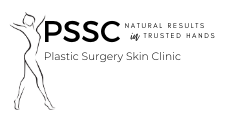Want to experience true facial rejuvenation and say goodbye to the signs of aging? Dermal fillers will help add volume and vitality to your face while smoothing out your wrinkles.
An increasingly popular cosmetic treatment for both men and women, injectable dermal fillers can lift, smooth and revitalize your face and skin.
People love the natural-looking result these procedures provide. These products dissolve naturally within 6-12 months and there is even evidence that they can restore your skin’s collagen-production in the process!
Once you’ve grown to love your youthful appearance, subsequent treatments are affordable and easy.
Dermal soft-tissue fillers can help achieve:
- Plump, thin lips
- Enhancement of shallow contours
- Softening of facial wrinkles and creases
- Improvement of the appearance of facial scars
- Balance of facial contour deformities
- Reduction or removal of lower eyelid shadows
Dermal fillers don’t require surgery, are minimally invasive, and there’s no downtime during recovery!
Anybody who wants to try fillers for the first time or to try it in a different area of their face should read this guide beforehand to be well-informed ahead of time.
Before You Go
Your first, and perhaps most important consideration is to find a reputable medical spa or cosmetic surgery practice to get the procedure done.
Do your research by looking into online reviews and comparing price points. You should make sure the place you choose has a plastic surgeon on site so you have the peace of mind that a medical professional is overseeing the procedure.
You likely have an idea of the outcome you’d like to gain from getting dermal fillers. It’s a good idea to sit down for a consultation with a cosmetic surgeon or aesthetician beforehand as they will be able to fully explain the procedures. They will also advise you on what you can expect and how you can expect to look afterwards.
Getting clarity before they inject will ensure you’re happy with the results afterwards!
There are a variety of filler treatments on the market, and the filler used will depend on the area of your face and your desired outcome. Different plastic surgeons will work with different compounds. This includes:
- Hyaluronic Acid (HA): An acid that is found naturally in your skin and keeps your tissues well-lubricated. Often used as a lip filler. It dissolves within 6 to 12 months. Brand names include JUVÉDERM and Restylane.
- Calcium Hydroxylapatite (CaHA): Another substance that develops naturally within the body, but in your bones. It is thicker than HA and helps smooth out deep lines and wrinkles, dissolving over 12 months or more.
- Poly-L-lactic Acid: This chemical compound is synthetic, but has been proven safe over the years in various medical uses such as dissolvable stitches. It is a collagen stimulator that helps restore your face’s collagen producing capabilities, and results can last more than 2 years.
What is the difference between dermal fillers and Botox?
Both dermal fillers and Botox involve injecting substances beneath the skin. However, they differ in some ways.
Botox and similar compounds such as Dysport (abobotulinumtoxinA) are used to treat dynamic wrinkles. Facial fillers treat static wrinkles and volume loss.
Botox or Dysport would be used to treat wrinkles or shadows around the brow, nose, and eye muscles. Dermal fillers help smooth out wrinkles that are present even at rest. They are complementary procedures, and many people opt to use both Botox and dermal fillers.
While Botox and Dysport have cosmetic purposes, some patients seek these fillers for function, as well.
For example, Botox or Dysport are also the compounds used for providing migraine relief or to prevent nighttime teeth grinding or clenching. The compound is injected into the masseter muscle of the jaw.
Before and During Your Scheduled Appointment
Be sure to talk it through with your doctor. Unlike surgery, you are awake for fillers, so ask questions and be direct, especially if it is your first time. They will provide you with tips to help you be less anxious.
You must let your doctor know about allergies or sensitivities as both the numbing cream and filler itself. These can cause a reaction. While you don’t want the procedure to hurt, you don’t want an allergic reaction to happen either.
If you have a rash or any sort of cold sore, your doctor will likely ask that you delay the procedure. Not only can either of these conditions prevent the filler from fully taking, but the filler can also make those problems worse.
You should also be sure to eat a modest meal beforehand. Having low blood sugar during the procedure can cause you to feel faint.
Lastly, just remember that while the effects of an injected filler are ultimately temporary, they could still last 12 months or more. Some compounds like Juvederm can be dissolved earlier with another injection if you are unsatisfied with the result. Others must dissolve naturally. Be sure to bring this up ahead of time with your doctor beforehand so you are aware of your options.
Interested in a Botox or Filler Treatment in Newmarket?
Curious about what fillers can do to emphasize your already great features? This temporary, non-surgical procedure that has less downtime and more rewards is a great option for those who aren’t sure if they want permanent facial plastic surgery.
We hope this piece details all you need to know if you’re considering fillers for the first time, or provided you with some more tips to make your second (or third) cosmetic appointment that much better!
Looking for a medspa with plastic surgeons on site? Book a consultation with us today and we can ‘fill’ you in further on what you need to know.

